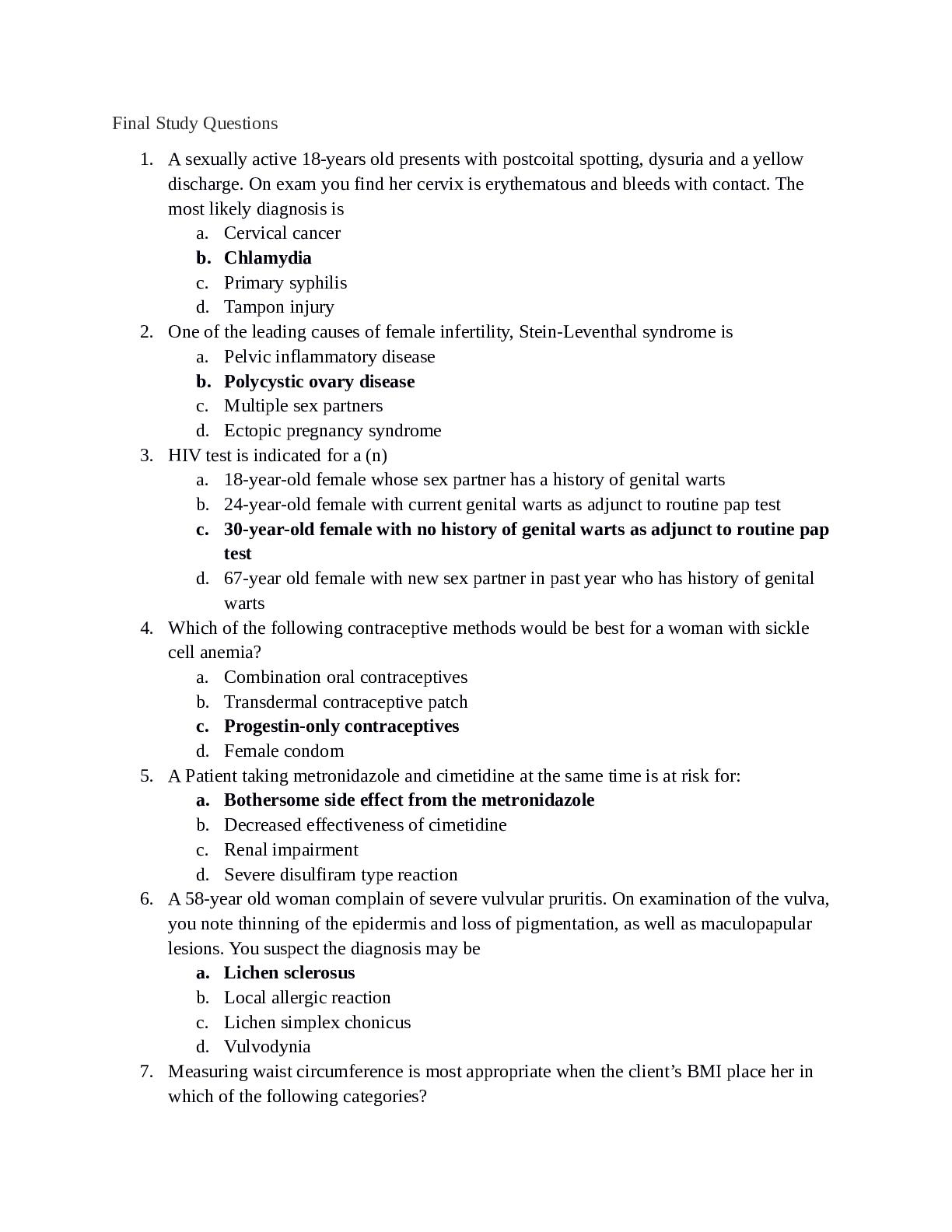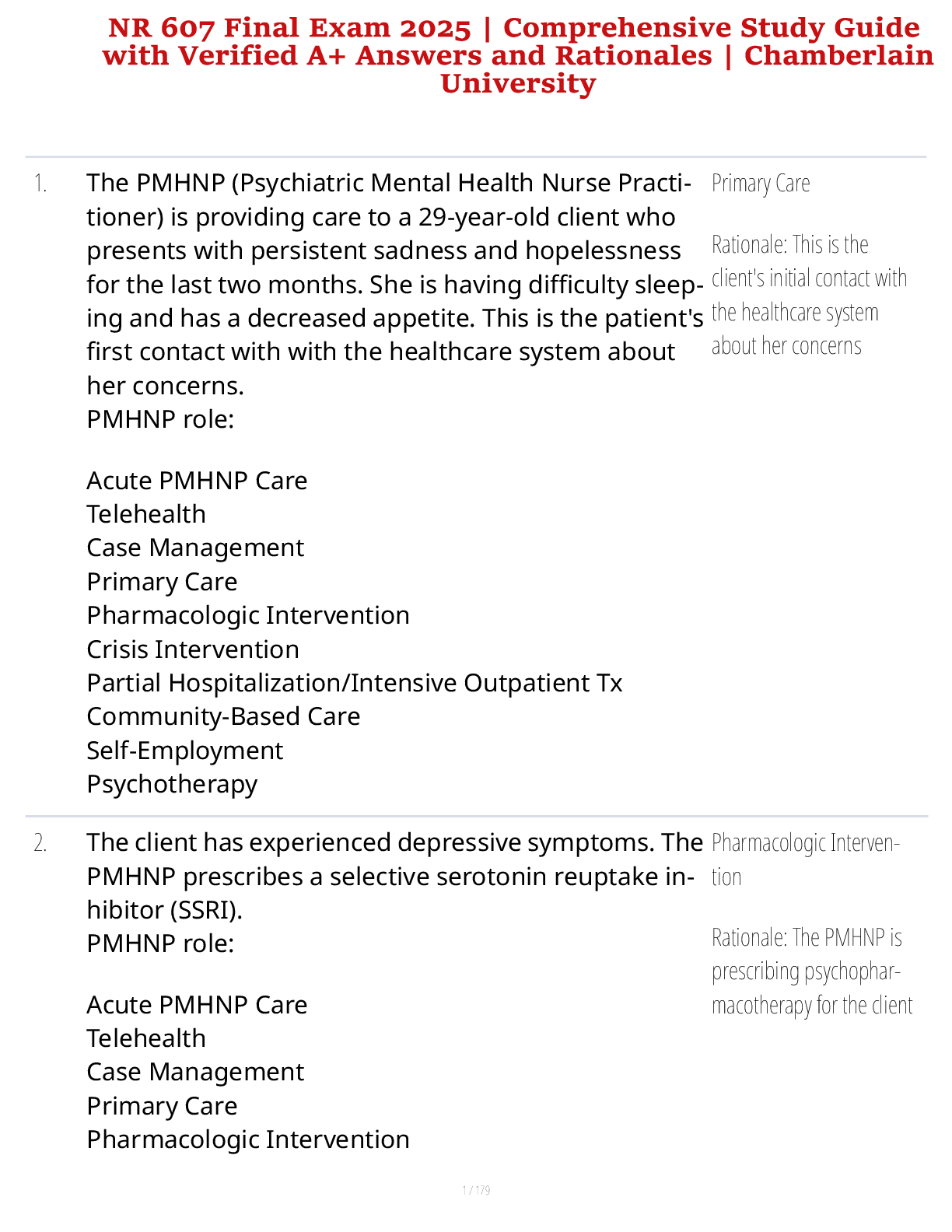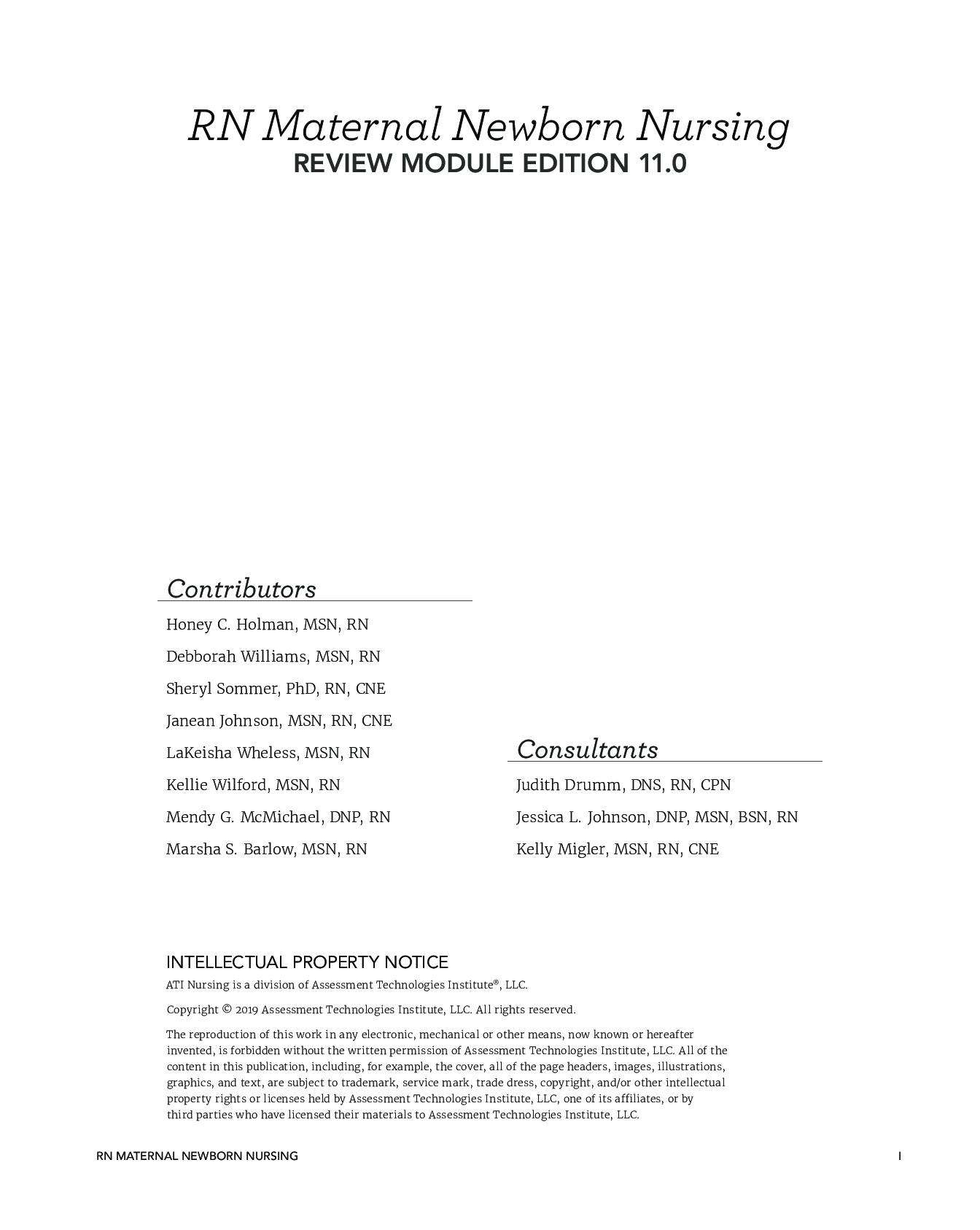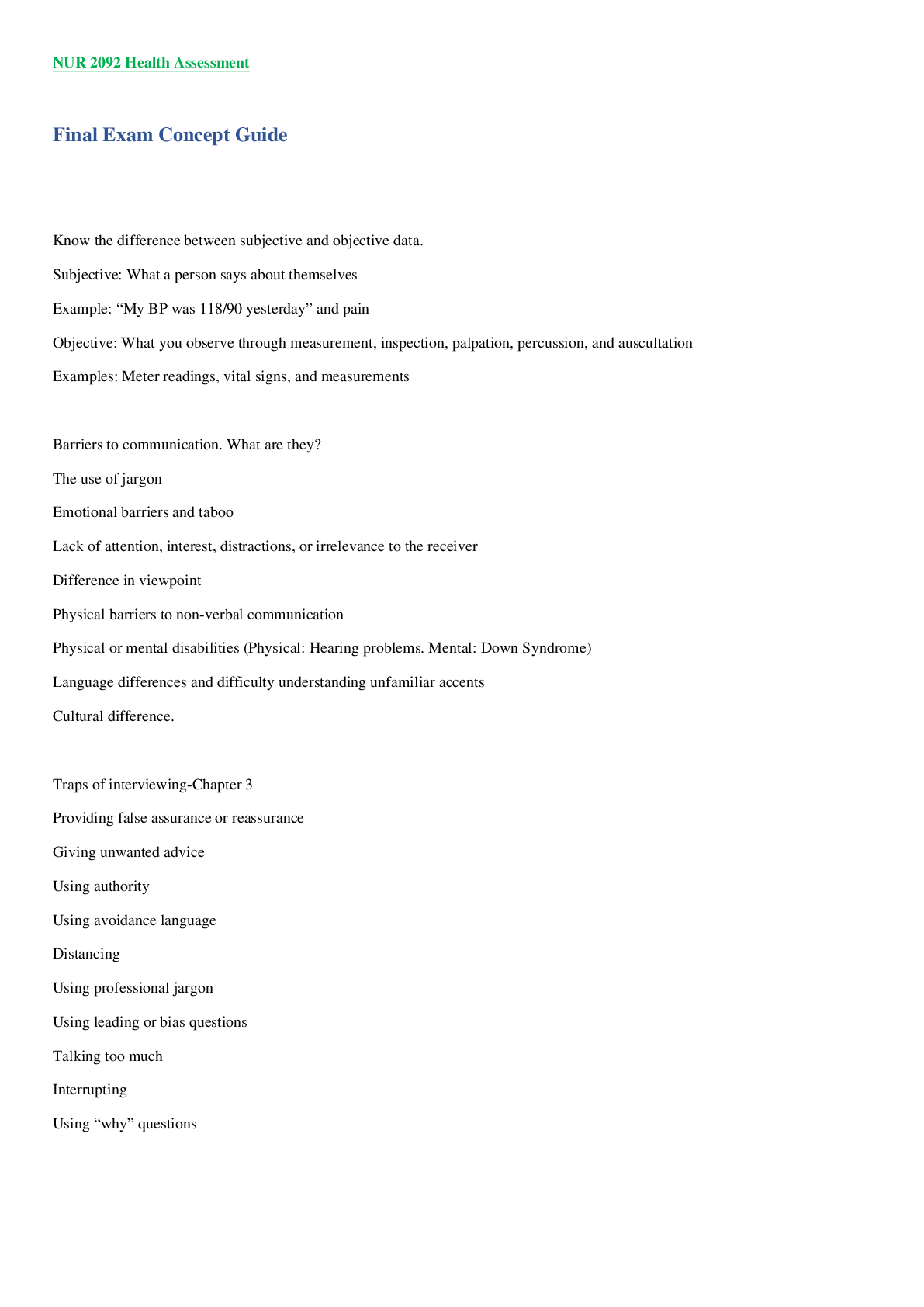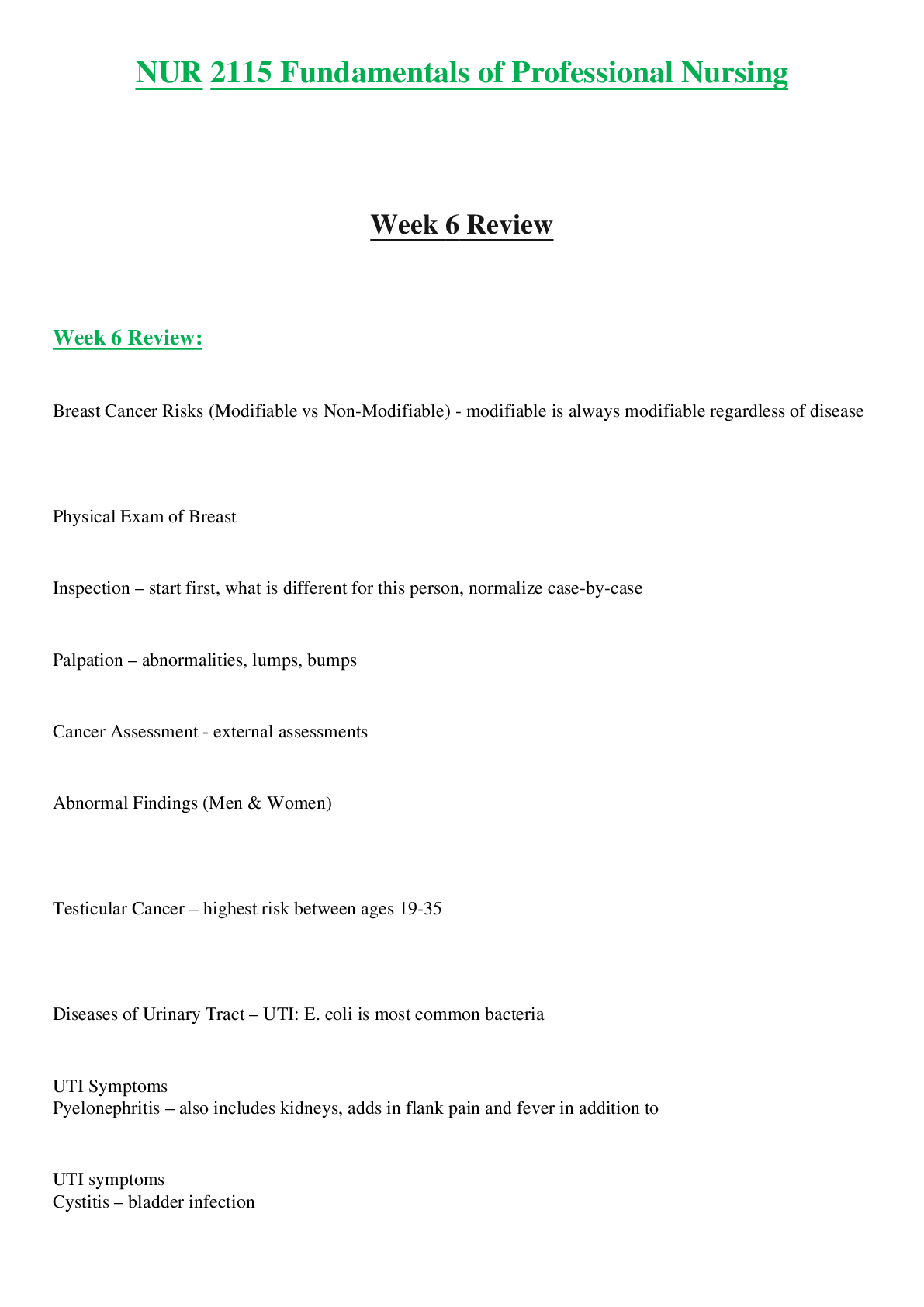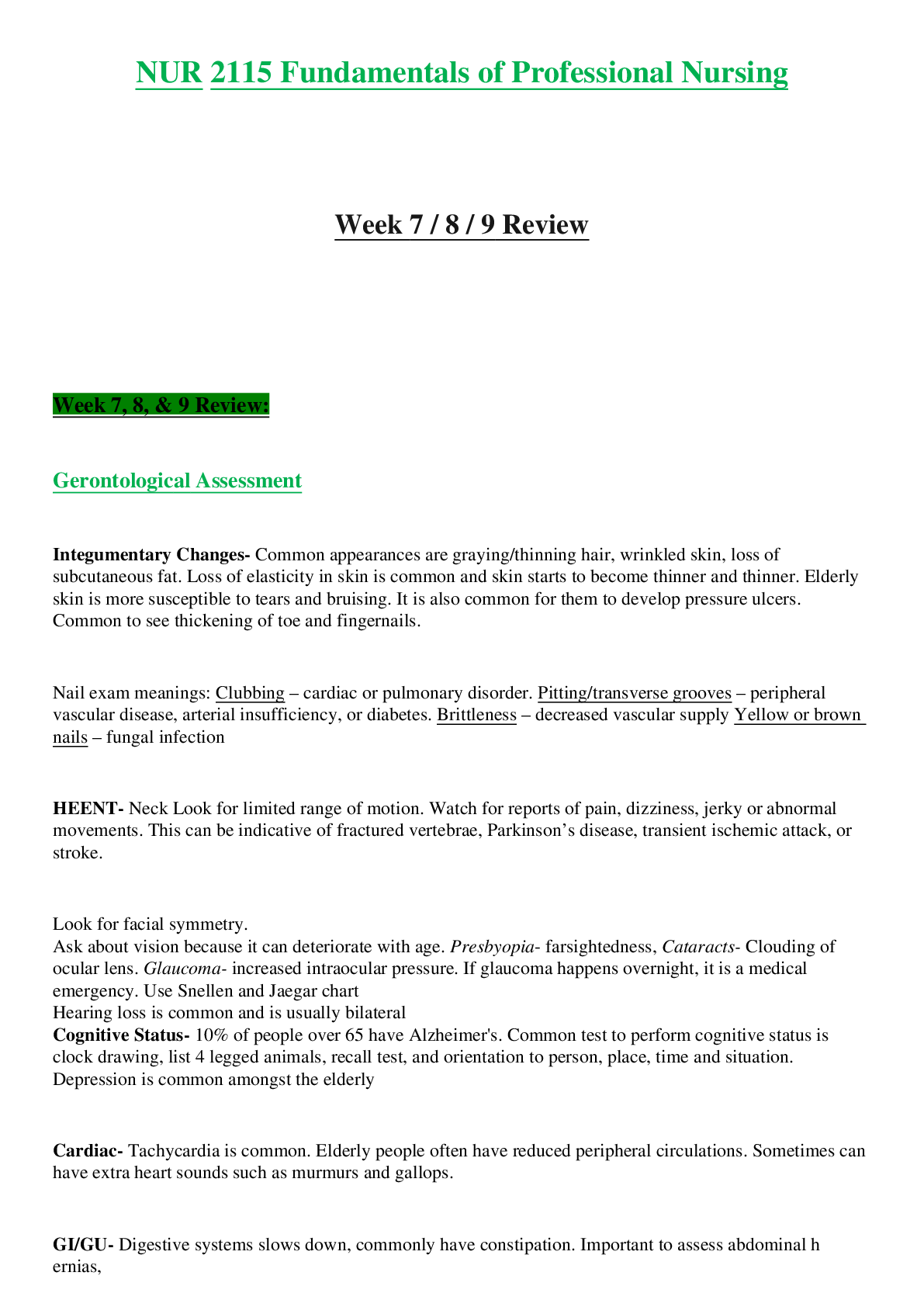Management > STUDY GUIDE > Summary Change Management Task 1 C208_CH.docx.doc (All)
Summary Change Management Task 1 C208_CH.docx.doc
Document Content and Description Below
A.1. Agency Mission The Health Department (HD) is dedicated to “improving the health, safety and wellbeing of Texans with good stewardship of public resources” according to their inaugural busin ... ess plan (HD, 2019). The organization is charged with providing healthcare for the residents of Country using public funds while meeting federal and state requirements and mandates. The agency oversees all aspects of healthcare including acute and long-term care, mental and behavioral health, state owned residential treatment facilities, and community service programs related to the health and well being of all Texans. The agency strives to make a positive difference in the lives of the people they serve (HD, 2019). The mission has been in place since the agency’s inception and was developed by the legislative branch through a bill consolidating twelve agencies into five distinct agencies under the oversight of HD. The employees and various internal stakeholders are familiar with the mission of the agency and, as public servants, buy into the mission of the agency. External stakeholders have high expectations of HD to carryout their mission and provide the most cost-effective services to Texans. The HD Blueprint for a Healthy Country outlines the vision and mission of the organization and all stakeholders are encouraged by HD executives to read and understand the goals of the agency. A.1.a. Three-Year Goals The agency outlines numerous goals dedicated to their mission to make a positive difference in the lives of the people they serve in their inaugural business plan. All levels of C208: CHANGE MANAGEMENT AND INNOVATION – TASK 1 leadership and subject matter experts provided suggestions and details of the business plan to ensure agency buy in and collaboration. The plan specifies the agency’s goals for improving efficiency, effectiveness, and process improvement (HD, 2019). In preceding years, the executive commissioners have produced various different agency-wide plans and reports with limited involvement from all levels of staff. The current executive commissioner ensured all areas were at the table when discussions about the agency’s future were discussed. The inclusion of all program areas allowed for a greater level of buy in from the individuals employed by the agency, as well as the stakeholders impacted by the service provisions of the agency. The first of the goals identified in the annual business plan covers their purchasing responsibilities. Over the past five years, the agency received an abundance of negative press surrounding the procurement and contracting division and numerous agency leaders lost their positions in the agency. The goal surrounding procurement and contracting services is to strengthen the organizational structure and develop tools and resources for employees to properly carry out their functions for the agency (HD, 2019). The agency plans to perform a transformation of the way procurement and contracting services are carried out at the agency. The second agency goal addresses the desire for the agency to improve their culture through improving their recruitment and retention efforts (HD, 2019). The agency has a high turnover rate and several positions are not easily filled due to the stressful nature of the job responsibilities. The agency employs both administrative and clinical staff to carryout their mission. Due to the competitive nature of clinical positions in highly C208: CHANGE MANAGEMENT AND INNOVATION – TASK 1 populated areas, the agency struggles with retaining clinical staff. The agency strives to put forward an agency-wide recruitment and retention plan to address these issues. The third goal for the agency outlines areas for improvement related to technology and innovation (HD, 2019). As a public agency reliant on taxpayer funding through legislative appropriation, technology and innovation often becomes unattainable due to the high cost for implementation of automation and innovative solutions. The agency aims to leverage systems already in place along with process improvement methodologies and practices to improve outcomes without a costly price tag. A.2. Key Stakeholders The key stakeholders for this agency include over 40,000 employees, millions of Texans receiving healthcare services, clinicians, agency contractors, insurance companies, managed care organizations, taxpayers, and the legislative and executive branches of the government. As an agency within the executive branch of the state, HD is accountable to the Governor and must provide numerous reports to outline their progress in meeting their mission to the legislature and governor’s office, which are available to the general public, as well. The executive commissioner maintains responsibility and accountability for this organization although external stakeholders, such as lobbyists and legislators, can influence the productivity and outcomes of the agency’s mission. A.3. Leadership The agency has undergone numerous transformations and consolidations over the last ten years. In 2002, the organization was consolidated from twelve distinct agencies into five overseeing the same functions with the Health Department overseeing the enterprise. In 2015, the agency was directed to consolidate even further and two of the agencies were C208: CHANGE MANAGEMENT AND INNOVATION – TASK 1 abolished and absorbed into HD’s function and another two remained separate, while the oversight from HD was strengthened. The agency currently stands as the largest state agency in the nation with over 40,000 employees serving nearly 30 million Texans. The transformed organization is led by a governor appointed executive commissioner who also delegates responsibilities down to other leadership in four separate chief areas to address the unique needs of the enormous agency. The chief areas oversee program and services, operations, policy and regulation, and legal services. Due to the vastness of the services provided by HD, additional leadership is required to carryout the functions of the agency. An additional layer of executive level staff fall beneath the chief areas to oversee the operation of the day-to-day functions called the deputy executive commissioners. There are various levels of leadership across the deputy executive commissioner areas based on the responsibilities for each. With an agency as large as HD, the adherence to the chain of command and bureaucratic processes play a major role in communication and policy development. Due to the size of the organization and the complex nature of the services provided, the agency policies are developed with the entire agency feedback. This encourages all parties impacted by the proposed rules and policies to provide feedback and concerns, if necessary. Although this is beneficial for the agency to maintain awareness of all changes, it does pose a serious issue in regard to time. The agency must route all proposed changes through nearly twenty levels of review in order to adopt new policies, procedures, and processes. The agency is divided into two separate methods of service delivery, program related services provided to external stakeholders and administrative services provided to internal stakeholders. Program related services administer services such as Medicaid, Supplemental [Show More]
Last updated: 3 years ago
Preview 1 out of 23 pages

Buy this document to get the full access instantly
Instant Download Access after purchase
Buy NowInstant download
We Accept:

Reviews( 0 )
$16.00
Can't find what you want? Try our AI powered Search
Document information
Connected school, study & course
About the document
Uploaded On
Nov 13, 2021
Number of pages
23
Written in
All
Additional information
This document has been written for:
Uploaded
Nov 13, 2021
Downloads
0
Views
80

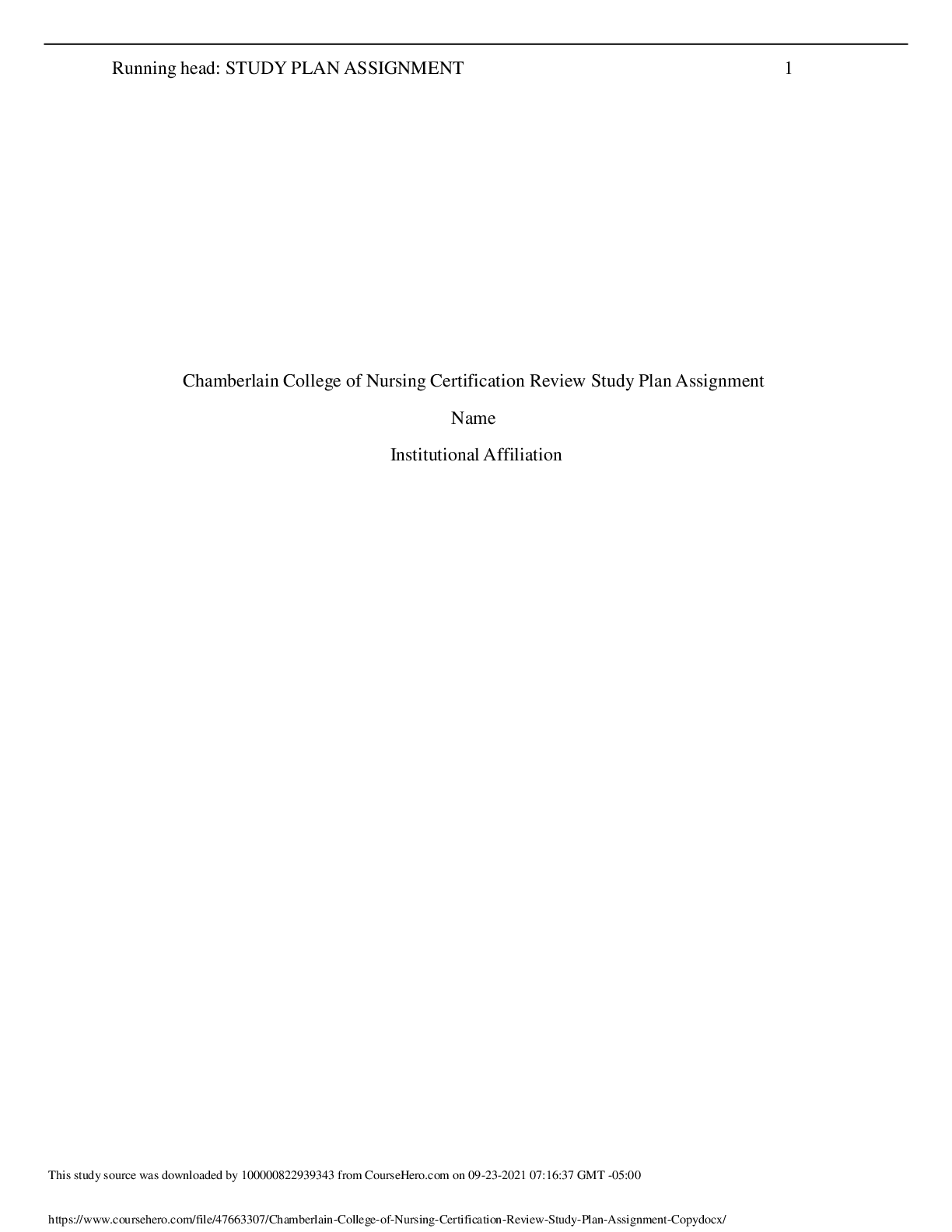
 - A Graded, Quality Work.png)

 - Latest 2022.png)
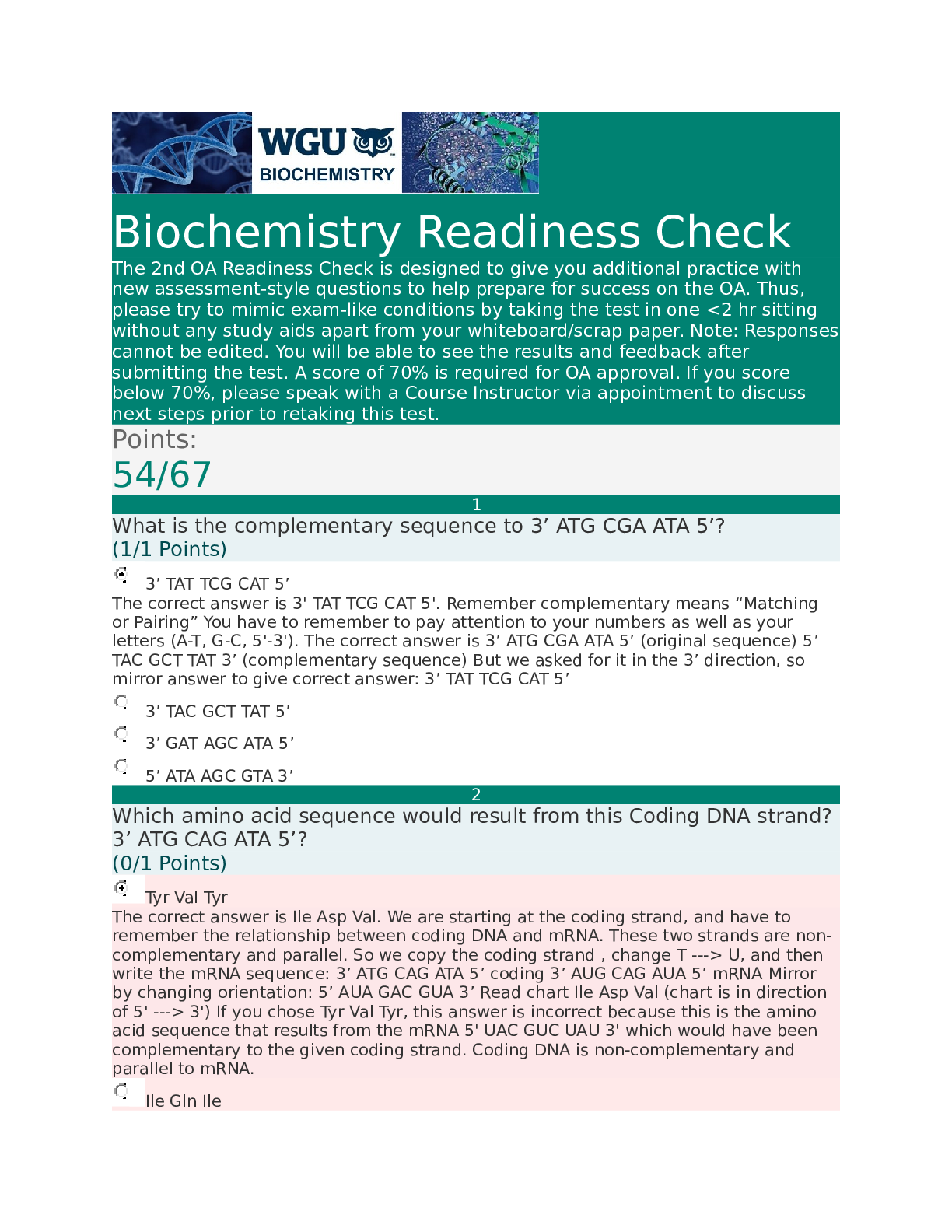
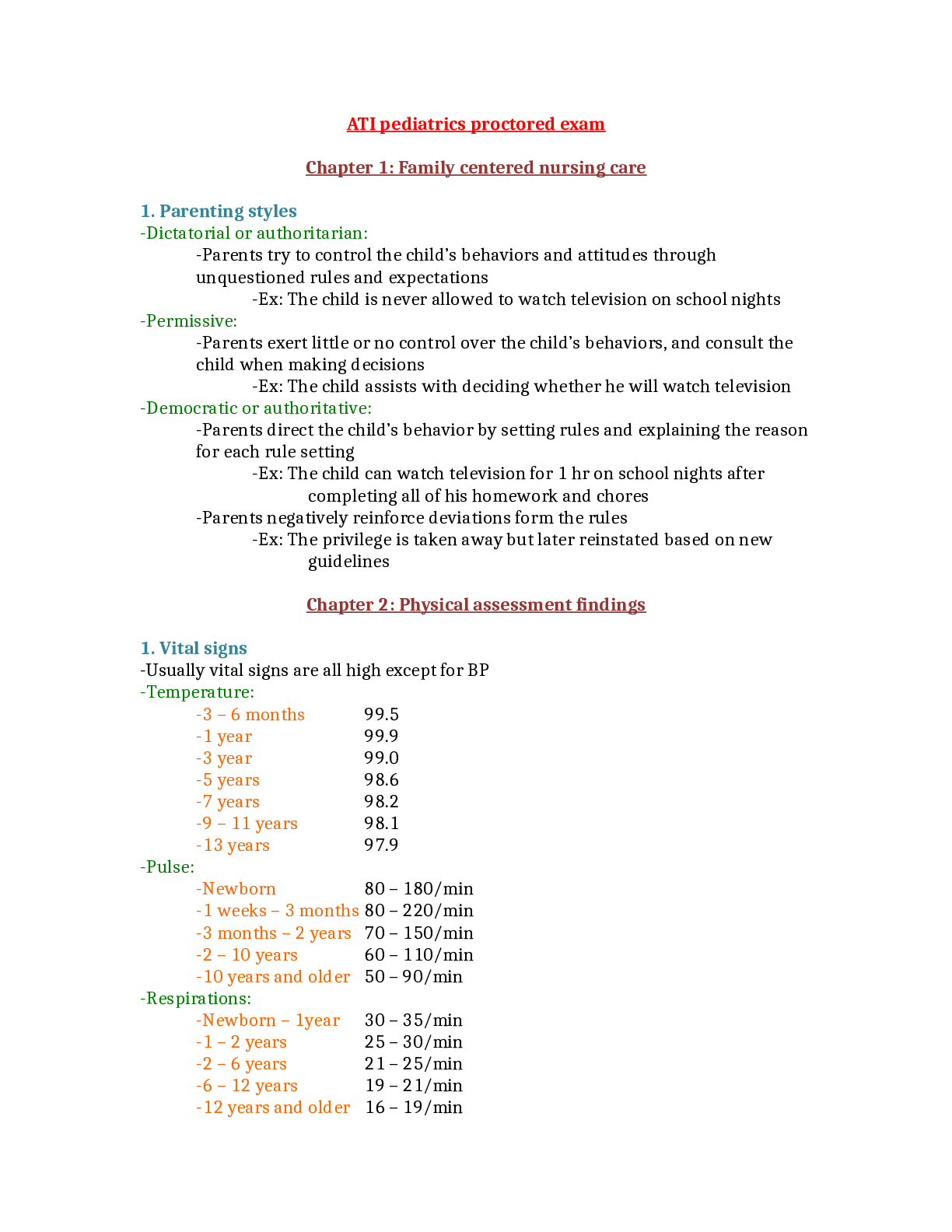

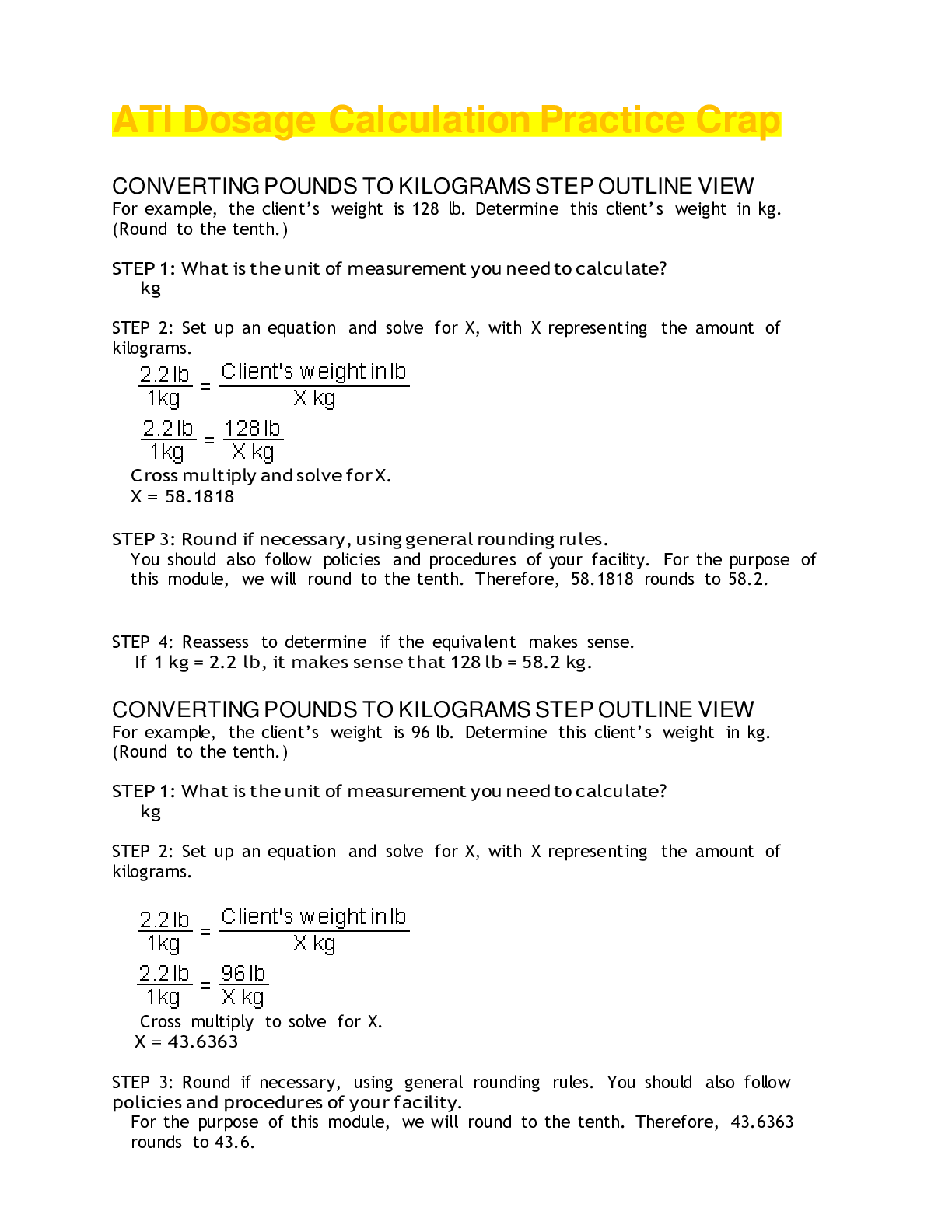

_Score 2831 Art history 1 Challenge Milestone 1 unit 1 Sophia Course (solution).png)
